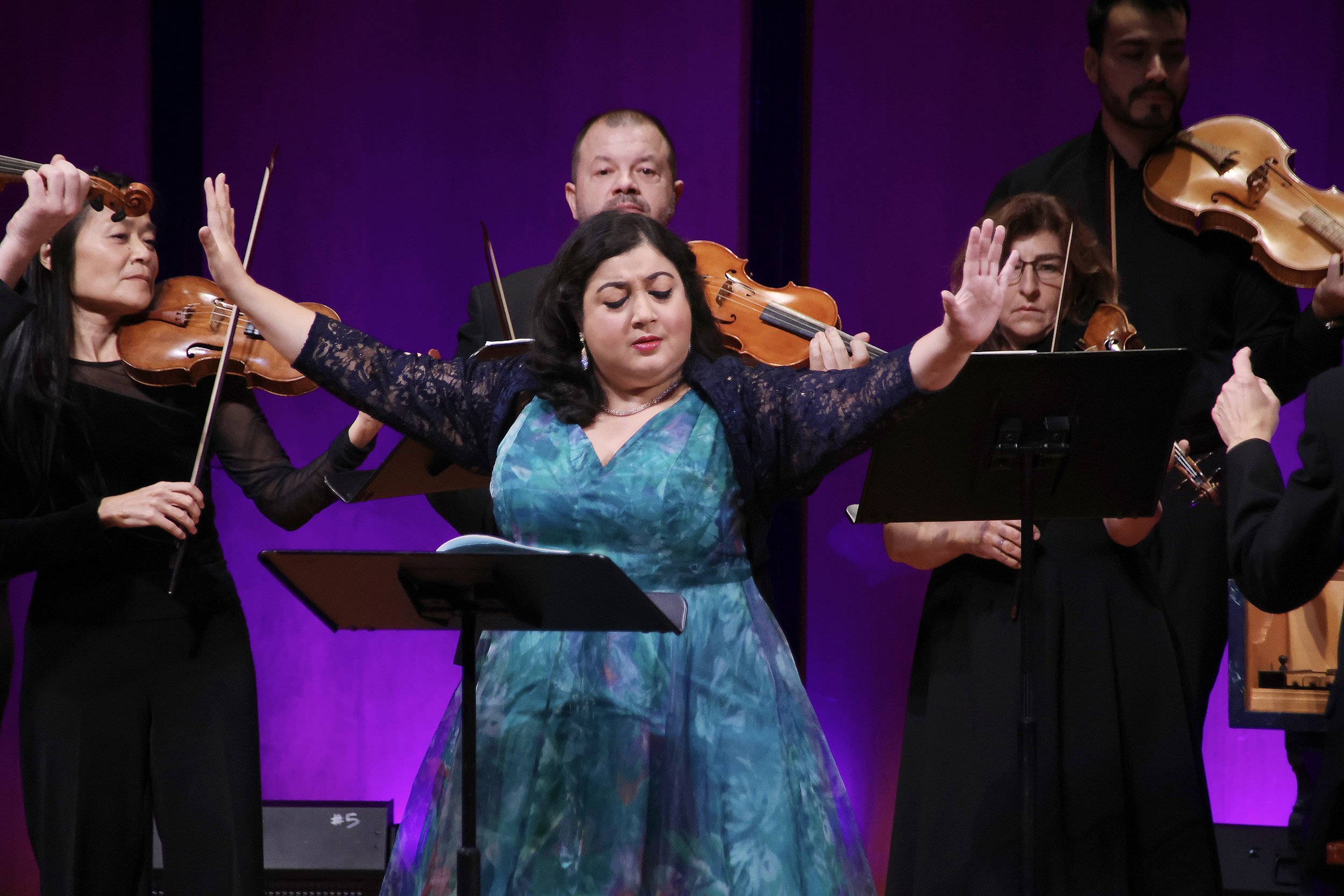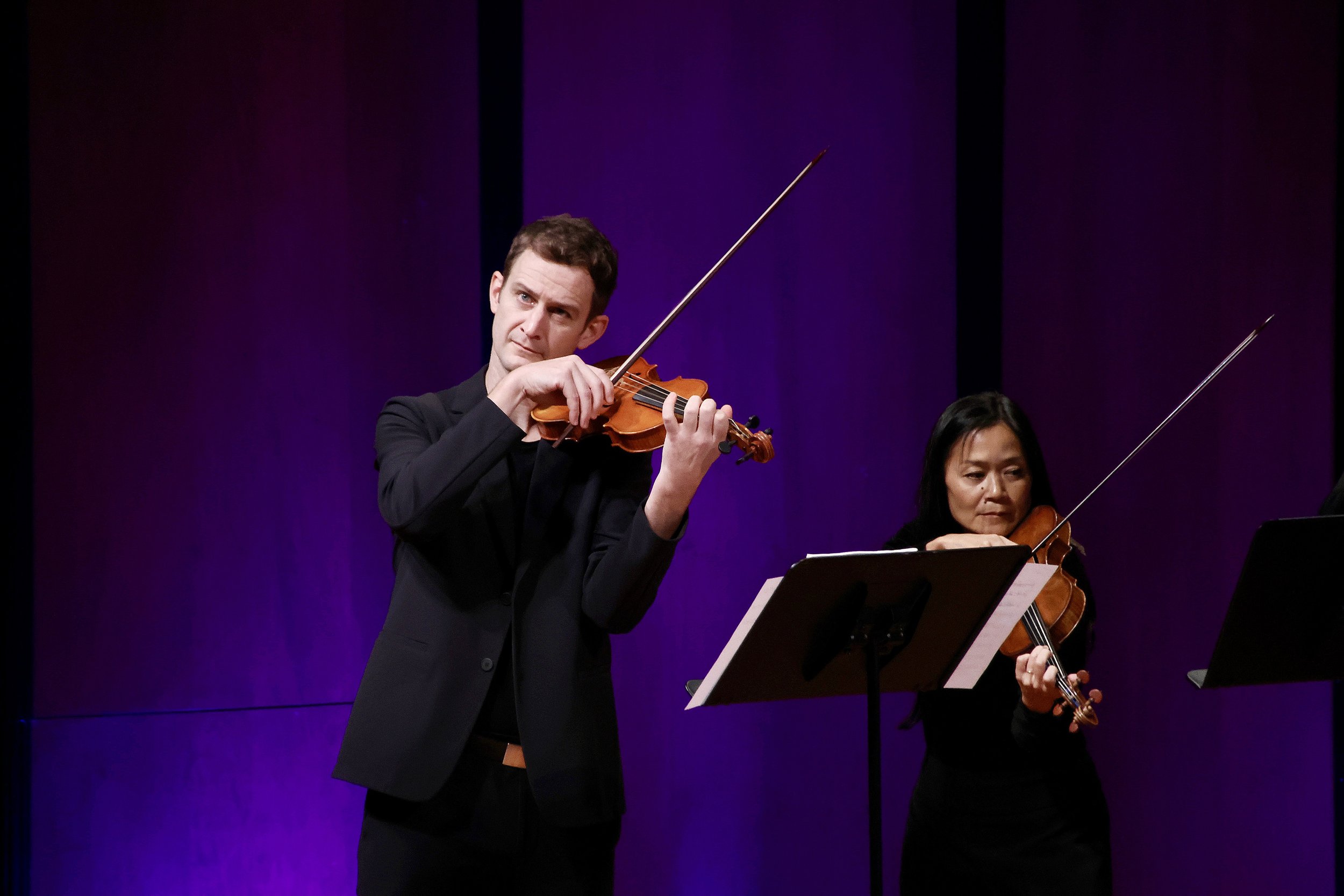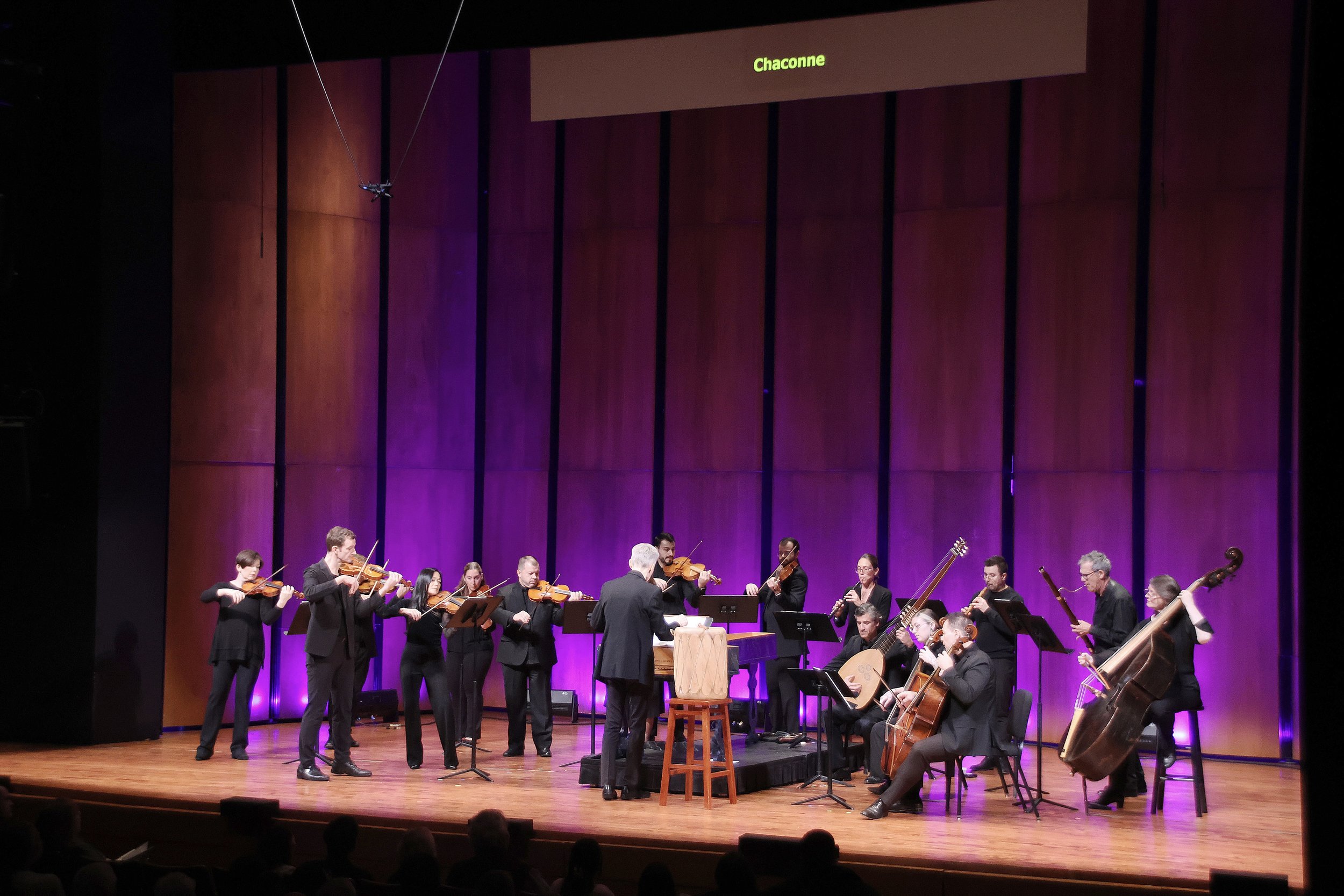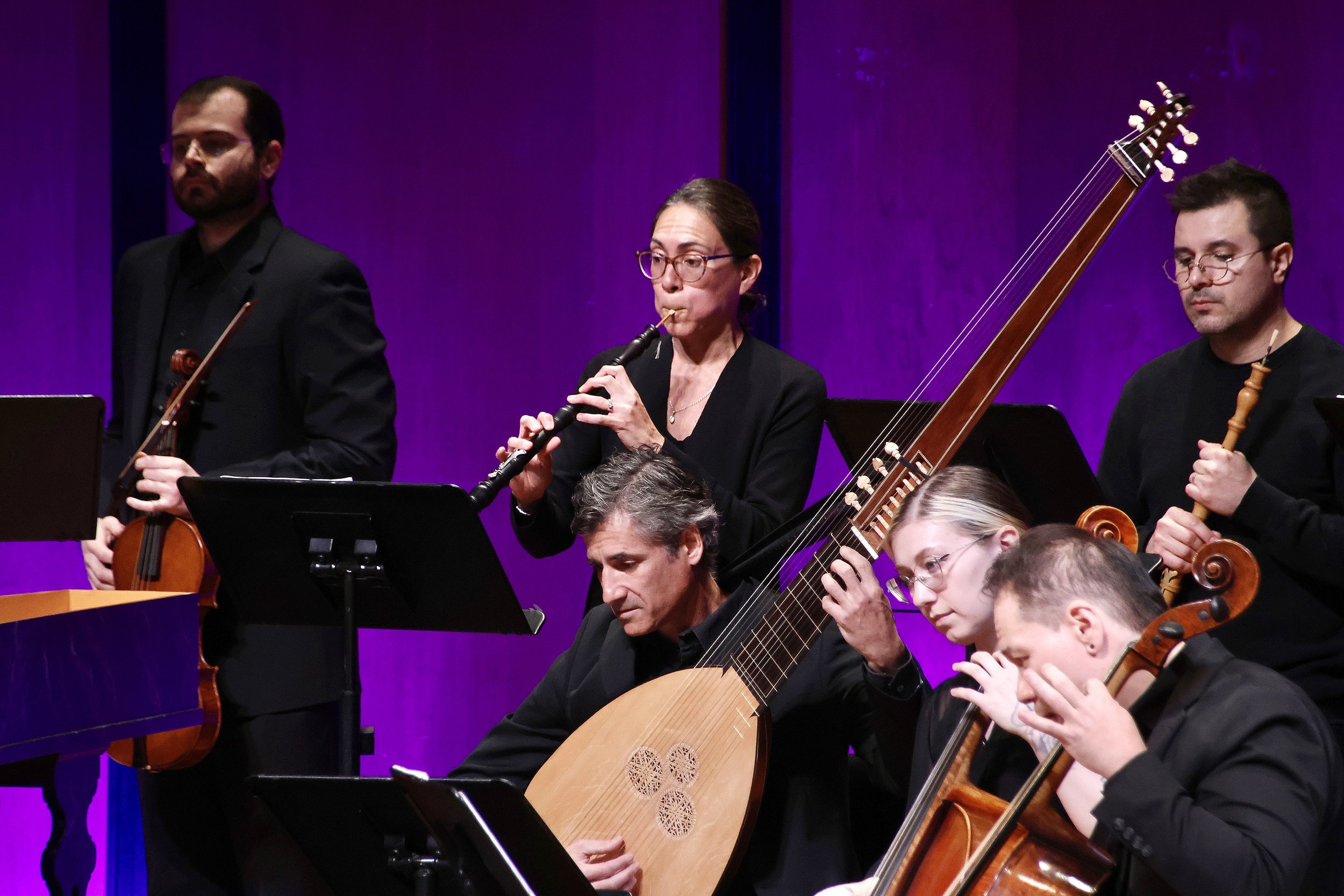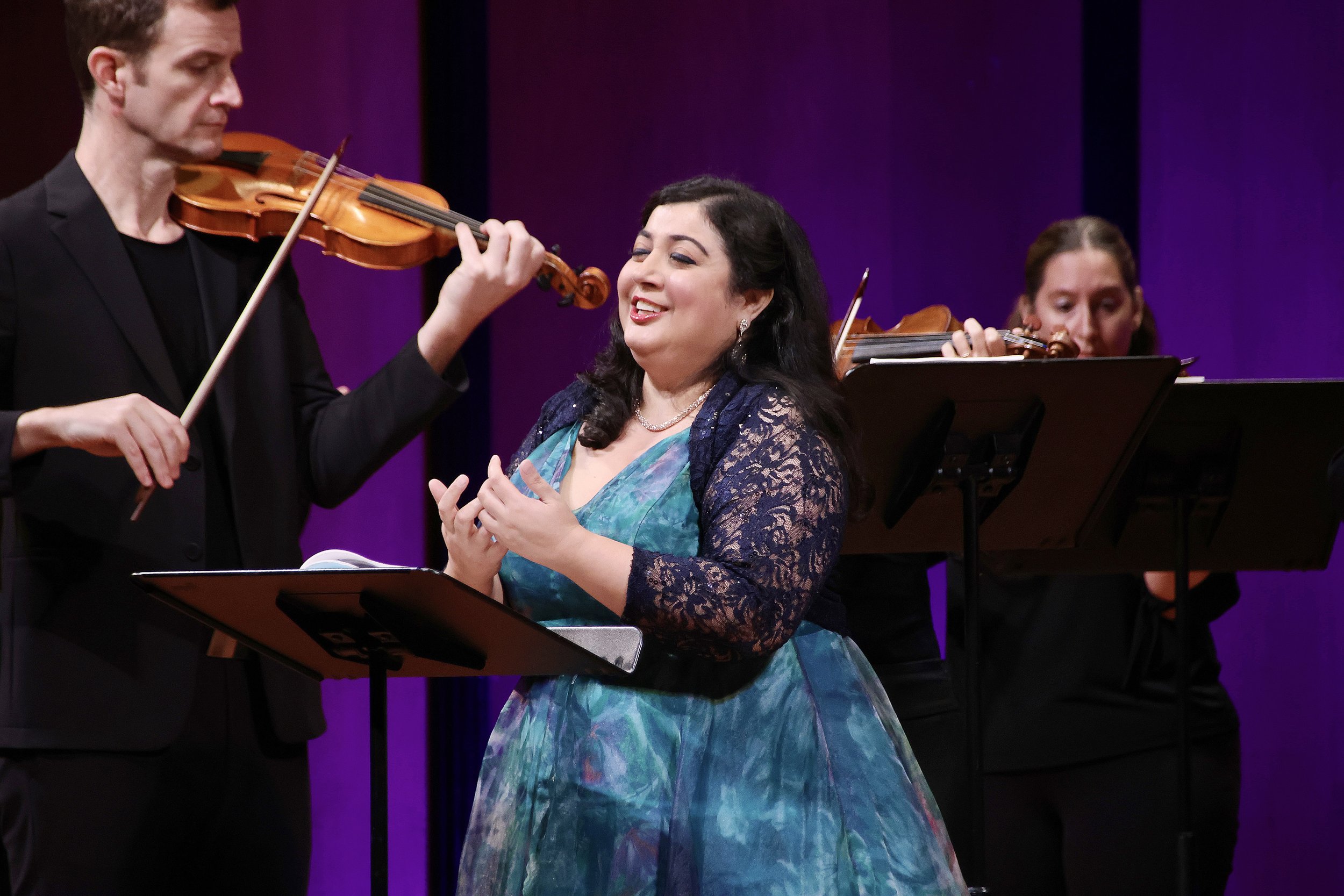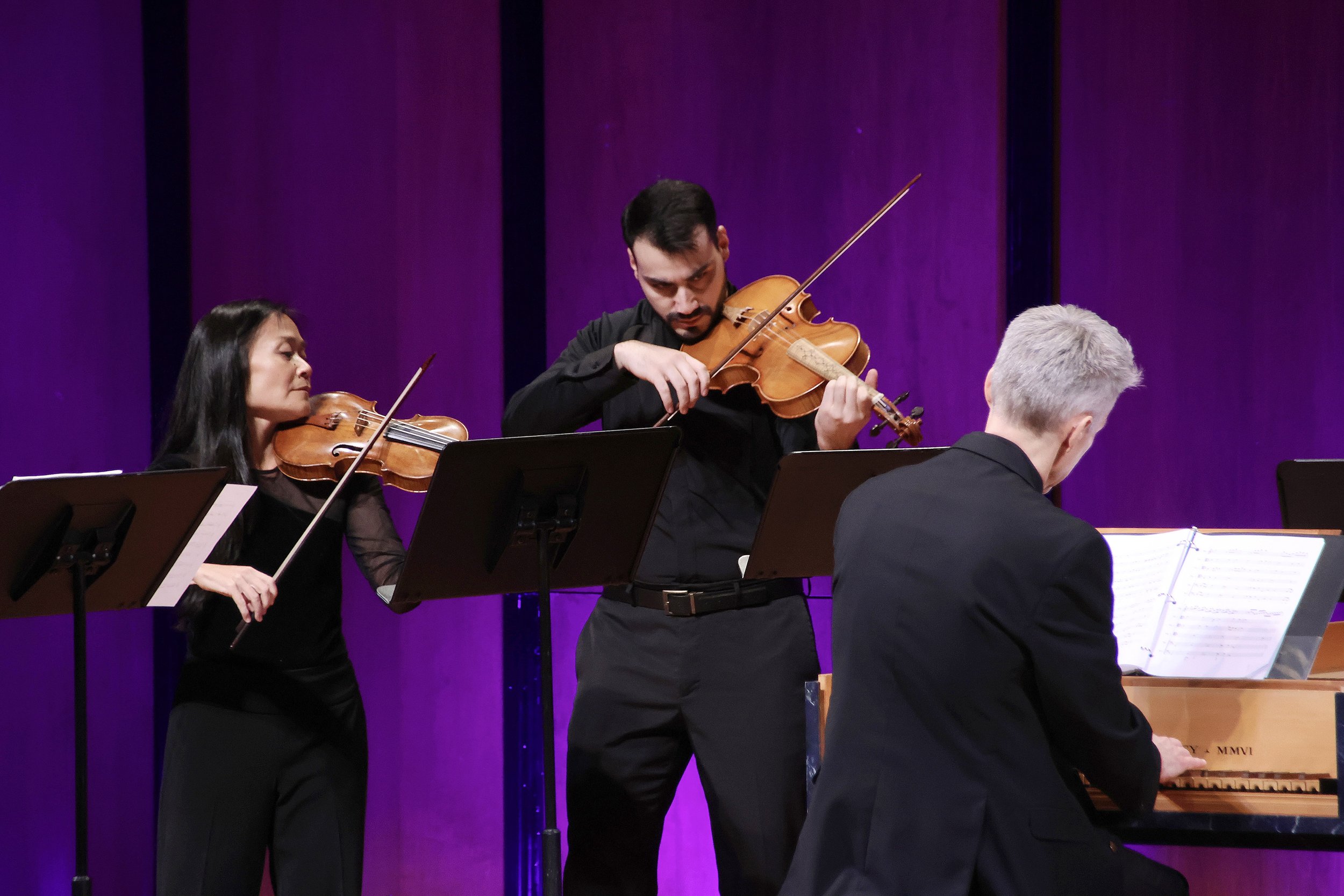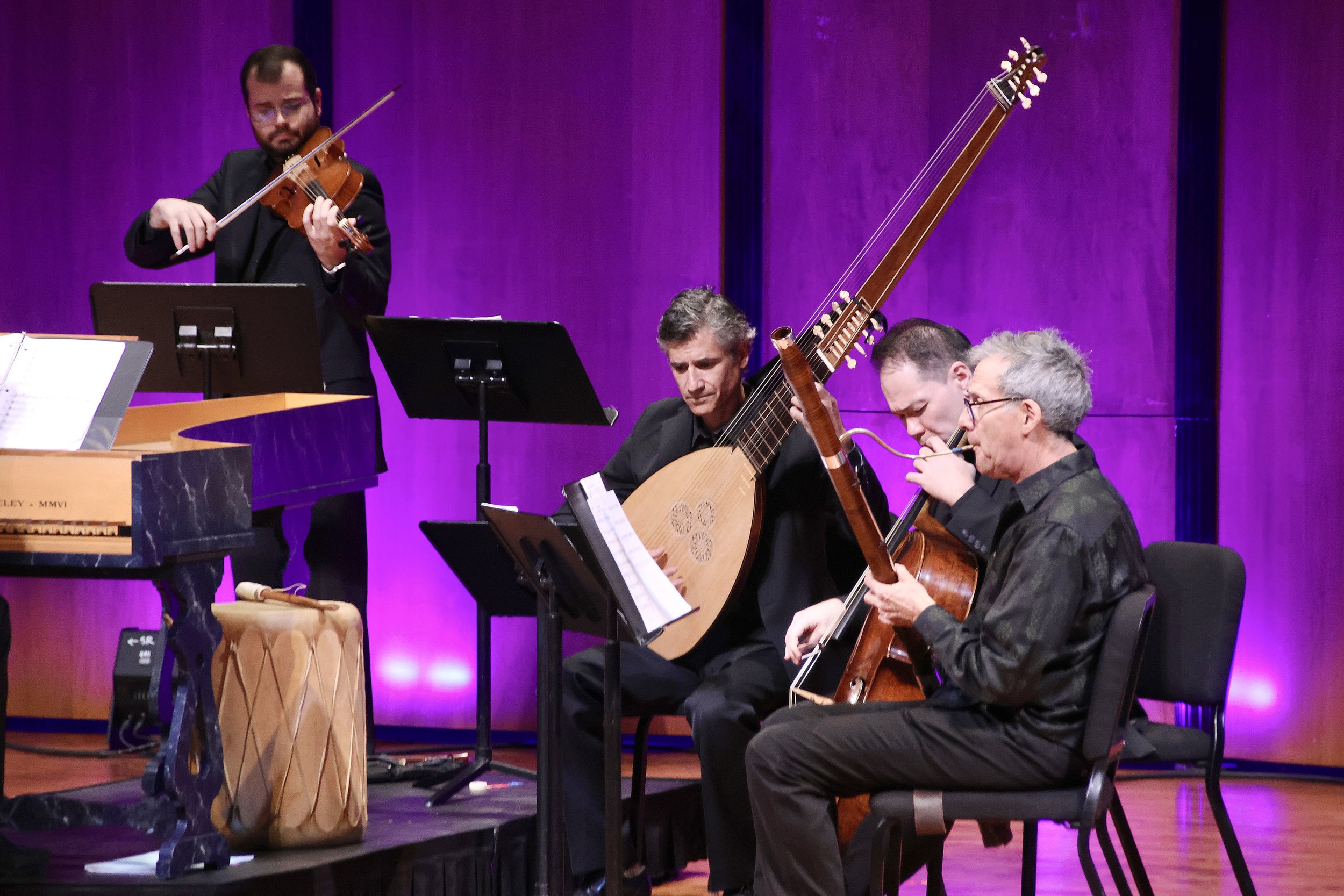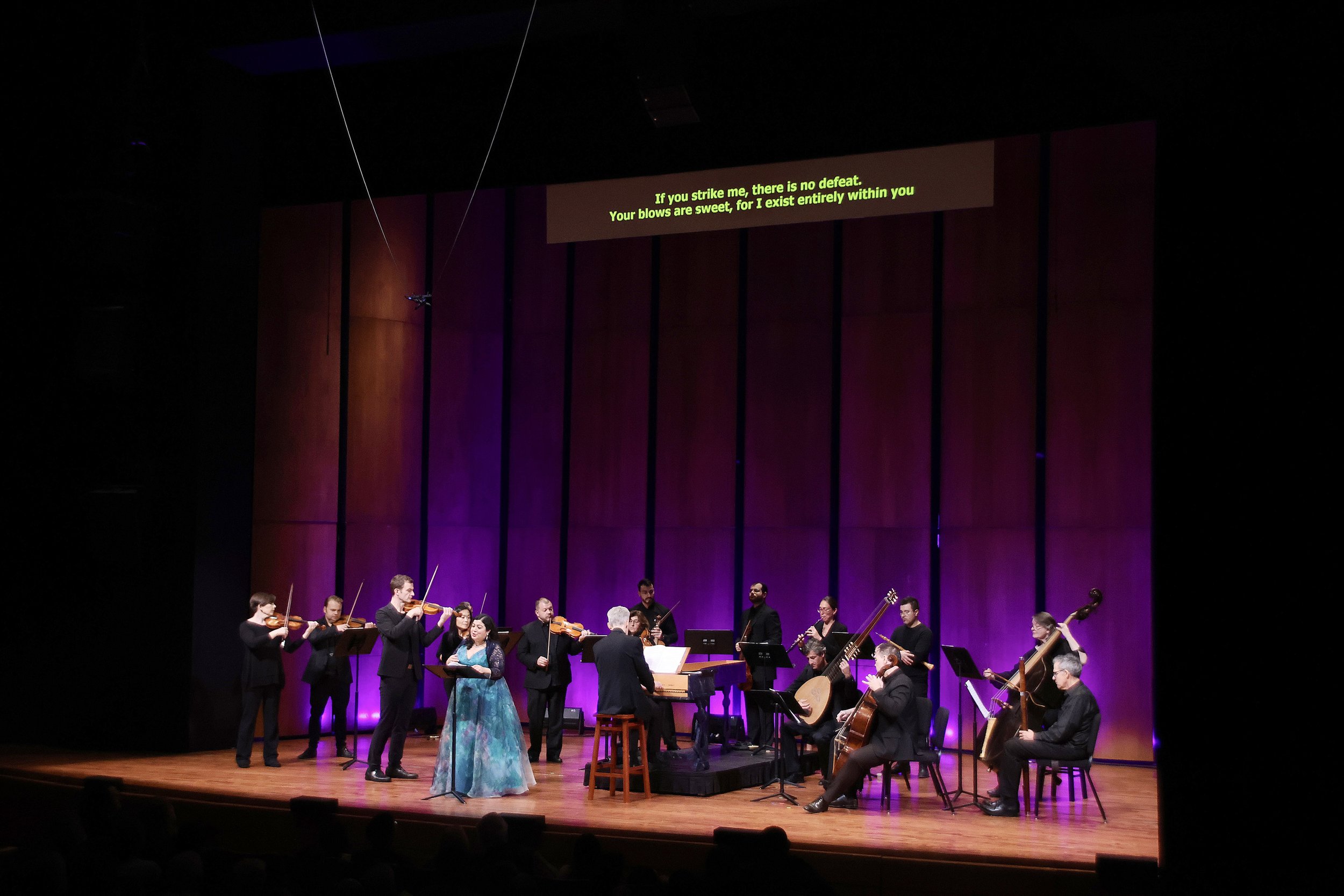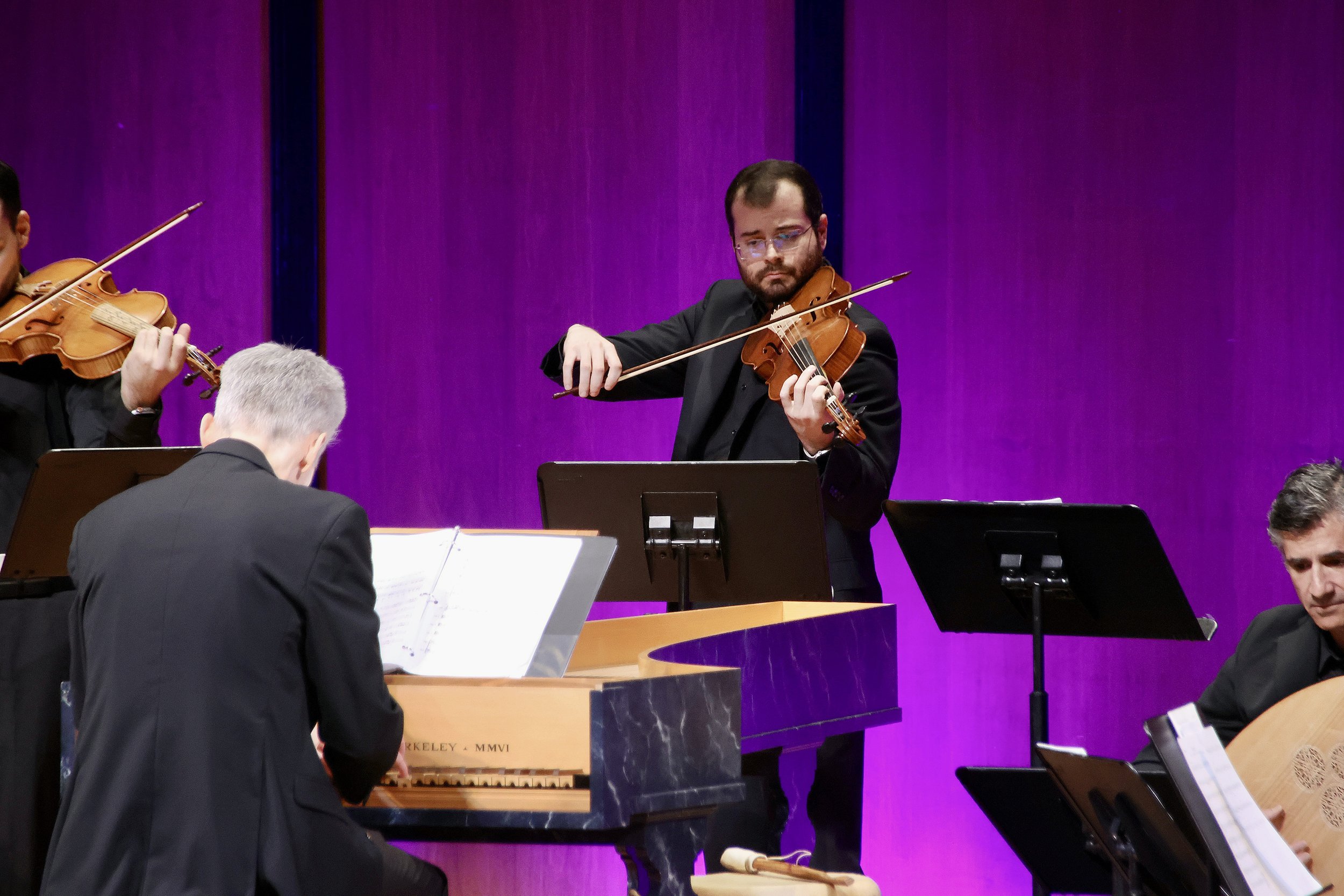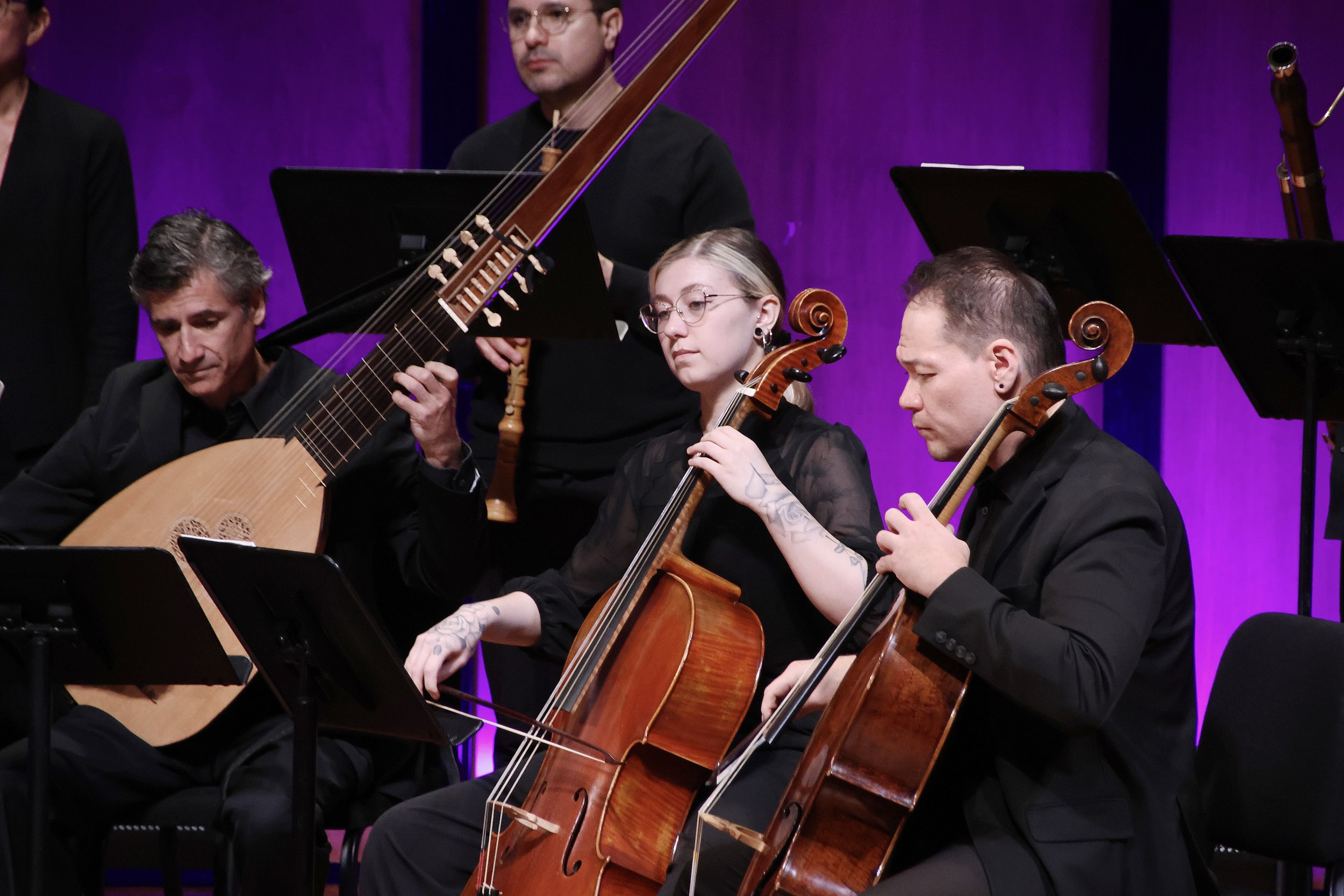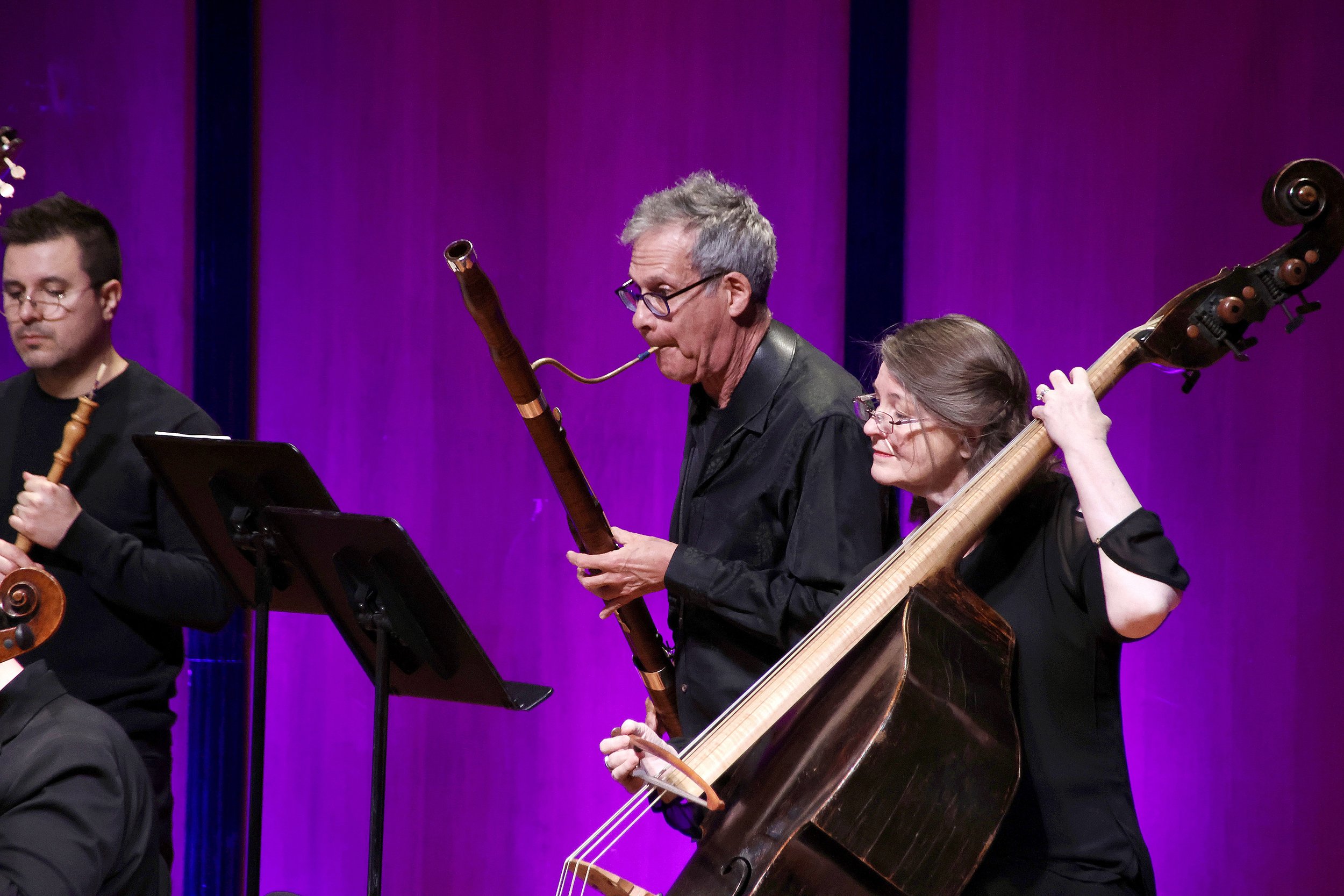Ecstatic Visions
Friday, November 3, 2023 at 7:30 PM
Zilkha Hall, The Hobby Center for the Performing Arts
Google Maps
Handel’s Silete venti, the major work on this program, is a spectacular solo motet for soprano and Baroque orchestra, one that rivals his best operatic scenes. It places a deeply religious soul within a naturalistic context, where rustling leaves and blooming flowers prompt a lush meditation on love and happiness.
Ecstatic Visions spotlights members of the ensemble as well, in rapturous instrumental music by Johann Joseph Fux, Johann Schmeltzer, Jean-Philippe Rameau, and more.
Featuring:
Sherezade Panthaki, soprano
Kathryn Montoya, oboe / recorder
Andrew Fouts, violin
Learn more about our 20th anniversary season: 20 Years of Magic here.
Concert information
Season subscriptions and single tickets
This concert has passed, but Digital Subscriptions and Digital Replay Passes are still available!
Digital: The online concert broadcast of this performance is available to digital subscribers and Digital Single Event Pass holders. The concert broadcast link will be emailed to digital patrons on the morning of the performance, and the replay will be available all season long.
On the program
Jean-Philippe Rameau, Suite from Naïs
Giovanni Bassano, Divisions on Onques amour
Giovanni Battista Bovicelli, Divisions on Ancor che col partire
Johann Schmeltzer, Harmonia a 5
Johann Joseph Fux, Rondeau in C Major
G. F. Handel, Silete venti
Run Time
1 hour and 30 minutes, including intermission
All texts are projected in English surtitles.
Audience Testimonials and Photos
“It was so beautiful!!! It transported me to a peaceful and joyful place” - Edith Ponce
“The music was, without a doubt, one of the best performances we've heard in 2023—and that's including stiff competition from HGO, Shepherd, Opera in the Heights, and the symphony. Bravissimo to everyone involved!” - William Tsai
“Amazing ! All was most enjoyable and beyond gorgeous..the early Baroque selections were so very special and to hear, and performed in the highest quality — such a treat.” - Anonymous
“Great and rarely heard Handel with a singer who gave it her all and then some. Lustrous. Controlled but also free.” - Richard Haney-Jardine
Photos by Pin Lim. Please see our Flickr for more photos.
About the artists
-
Ecstasy—that radical state of mind unfettered by self-control—has always appealed to artists, who regularly transcend the ordinary and inspire others to do likewise. Exploring that state in sound, this program compares how the ecstatic played out in distinct cultures that pursued nirvana in their own characteristic ways.
Popularized in the sixteenth century by Spanish guitar players, the chacona began as a simple yet highly contagious rhythm borrowed by European settlers from practices observed in the New World. Valued for its mesmeric qualities but vilified in some quarters as obscene, this earthy dance found in the seventeenth century an international audience, who renamed and reshaped it to new ends. Among the Italians, the ciacona became a beguiling harmonic pattern for vocal display. The French turned their chaconne into a grand dance en rondeau, with a steady alternation of a refrain with varied material. From the time of Louis XIV onward, French ballets and operas typically feature a chaconne at triumphal or ritualistic moments in the drama, as the entire company glorifies a ruler or celebrates concord, either between competing interests or with the cosmos itself.
Tradition thus obliged a chaconne for Le triomphe de la paix (The Triumph of Peace), the original title given to Naïs, an opera by Jean-Philippe Rameau from 1749. Criticism of the treaty ending the War of the Austrian Succession caused some rethinking of the work’s title at the Paris Opéra, however; its renaming honors the central character instead. Naïs, the nymph around whom this pastorale héroïque revolves, has multiple competing suitors: two mortals and Neptune himself. (Guess who wins.) At the climax of Act I, a magnificent Chaconne welcomes all to the Isthmian Games, a mythical sporting event akin to the Olympics. To that regal movement, our suite appends a handful of shorter dances from the same work: two playful Airs, a sonorous Sarabande, and a brisk Contradanse.
Onques amour by Thomas Crequillon (c1505–1557) appeared in multiple sixteenth-century publications of part songs. Like many such pieces, its single verse addresses love and loss in a pithy and direct way. Its moral, that the former lasts but a little while, comes across clearly. The charms of this perfectly poised chanson prompted admirers to keep tinkering with it, often decorating the top of the texture lavishly with “divisions” or “diminutions.” The latter replace long notes with shorter ones, often in elaborate patterns that spin a decorative halo around the original. The Venetian composer Giovanni Bassano, who wrote a book about this practice, embellished Crequillon’s chanson in precisely this manner, for solo instrument above a chordal accompaniment.
Another classic of this repertoire, Ancor che col partire by Ciprano da Rore (1516–1565) has inspired countless divisions since its first appearance in print. The Italian singer Giovanni Battista Bovicelli left two separate glosses of this piece, both of which—unusually—carry a text. This program offers the more elaborate of the two, which Bovicelli supplied with Latin words so that it could be sung in church. Our performance of this and the Bassano division are both delivered on recorder instead.
Division-style embellishment continued through the seventeenth century, when it coexisted with more progressive—and to us, more familiar—methods for decorating a musical line. Johann Heinrich Schmeltzer’s Harmonia a 5 is a case in point. This piece realizes the ideal of heavenly harmony with the same kind of texture as the previous two works: an elaborate and mostly scalar solo line for violin above an accompaniment for multiple instruments. The composer, one of the finest violinists of his age, wrote many such ensemble works during his long service to the Hapsburg court, which cultivated a significant body of instrumental “program” music, which carries an extramusical message or narrative.
As Kapellmeister (chief musician) in Vienna, Johann Joseph Fux enjoyed wide renown as a composer, music theorist, and pedagogue. His seminal treatise on counterpoint, the Gradus ad Parnassum, served generations of students, and its fundamental precepts can still be found in virtually every textbook on the subject. By titling this study “The Steps to Parnassus” (a lofty mountain central to Greek mythology), Fux aestheticized what many of his contemporaries still considered craft: the ability to make music by putting notes against notes. As a composer he sought a similar balance between venerable tradition and the latest trends; his Rondeau in C Major features old-fashioned string scoring (with two viola parts) but is cast in the fashionable guise of a French dance. Like Rameau’s chaconne, this rondeau relies on a repeating refrain, around which weave increasingly flamboyant episodes for solo violin and bassoon.
Sometime between the mid 1720s and 1730, George Frideric Handel composed Silete venti for an unknown purpose. Having settled definitively in London years before, he was under no obligation to compose Latin church music; scholars speculate instead that this lavish work might have been written as a favor for an Italian opera singer or perhaps for an important patron during a return visit to Italy in 1729. Adapting several movements from earlier works of his own, including one of the Chandos Anthems, Handel returned to Silete venti several years later to borrow a few of its arias for the second version of Esther. Such was the practice of many composers during this era: good music could always be repurposed.
Like Handel’s earlier Latin motets, Silete venti is a solo vehicle for soprano, accompanied in this case by a full ensemble of oboes, bassoon, strings, and continuo. Exceptionally fine text setting distinguishes it from Handel’s other motets, however, putting it on a plane alongside the composer’s best operas and oratorios.
The work begins with a French-style overture in two large sections, the first slow and majestic and the second fast and fugal. Notwithstanding the conventional start, a surprise follows: interrupting the cascades of notes, the soprano commands the orchestra (“the winds”) to be silent. With the remainder of her opening text delivered as accompanied recitative, a mood of rapturous calm descends. The first aria, whose text conflates sacred love (agape) with erotic love (eros), is a poignant mix of melodic whisps and supple chromatic turns. The second recitative/aria pair makes its offering of “garlands…blossoms,” even “the regal palm frond” with increasing ardor, including a strongly contrasting second section in which Handel obliges the anonymous poet’s call for the “winds to stir” with elaborate undulations in the orchestra. The composer’s response to the libretto’s last word is similarly inspired; one hardly wants this ecstatic gigue to conclude, despite its incessant repetition of “Alleluia.”
© Matthew Dirst



